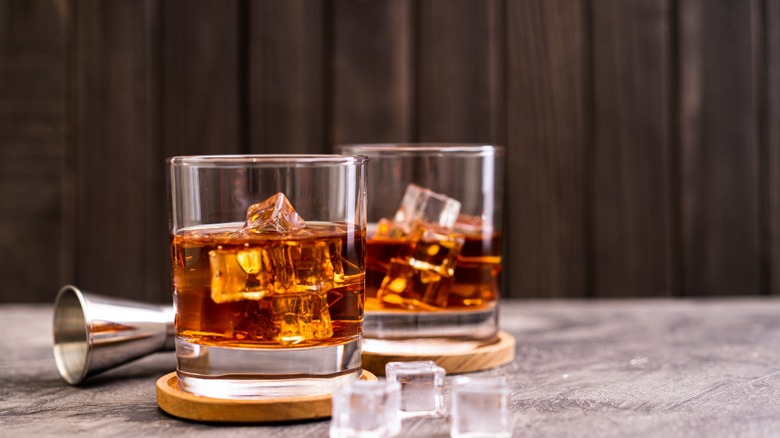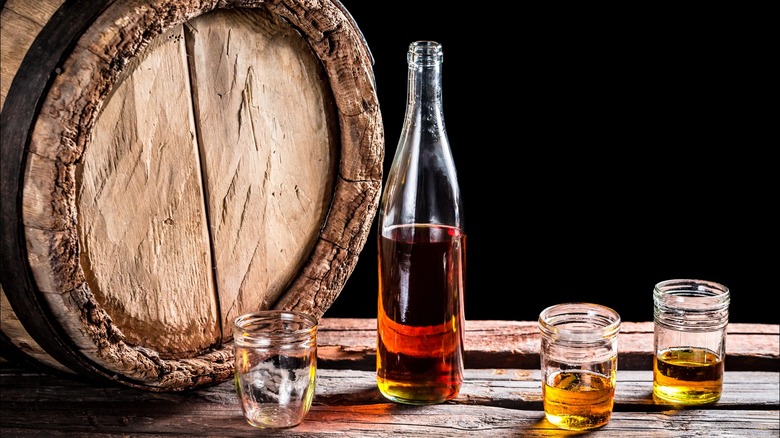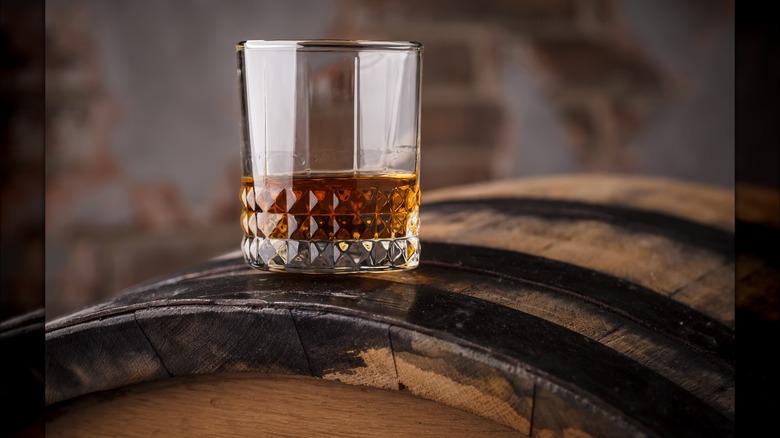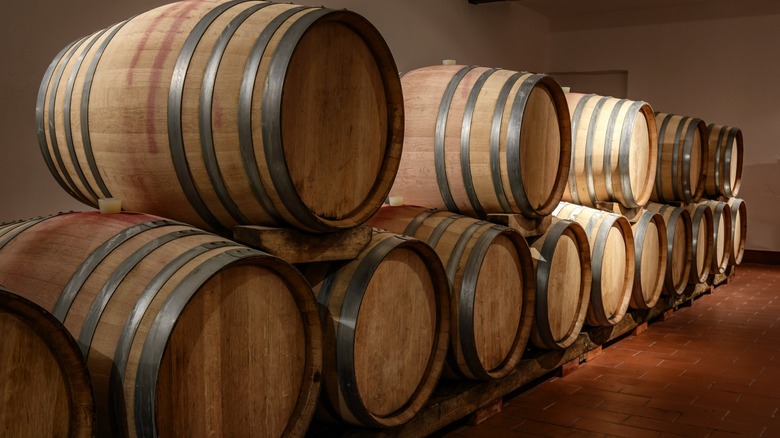Full Proof, Barrel Proof, And Cask Strength Bourbon: The Differences Explained
Whether you're an initiate, intermediate, or even an expert in the vast world of bourbons, it can sometimes be overwhelming just to browse the shelves in search of a bourbon that fits your palate. When picking through bourbons, and other whiskeys for that matter, it's easy to get inundated with terminology and lingo that essentially assumes that you know what it means. Every bourbon enthusiast has been there at some point, so today, let's make your search a bit easier and distinguish a few terms you're likely to encounter on your hunt. Specifically, let's figure out what the terms "full proof," "barrel proof," and "cask strength" actually mean.
First of all, it's wise to clarify that each of these terms relates to the "proof" of the spirit in question — a term with somewhat mystified origins that nowadays simply denotes the alcoholic strength of the liquor in question. Though different proofing measurements were once in use, the most common system nowadays is very simple: The proof of a spirit is a number equivalent to double the alcohol content. For example, bourbon can legally be no lower than 80-proof, which means it can't have any less than 40% ABV (alcohol by volume). If a spirit is 120-proof, it has 60% ABV, and so on. Now that you have a grasp of proofing, let's get into the jargon of the whiskey business.
Full proof is measured before barrel-aging
Just like any whiskey, this beloved corn-dominant spirit undergoes a fermentation process as well as an aging process — the latter taking place in new oak barrels. What's most important to know here is that the spirit's proof is measured both before it enters the barrel (while it's still a clear, somewhat neutral liquor) and after (once it gains its characteristic color and extra flavors inherited from the barrel itself). In simple terms, full-proof bourbon is a bourbon that has the same proof point as it had prior to any aging. Bourbon is often aged in warm climates, such as Kentucky, the bourbon capital, resulting in water evaporation over the minimum two-year aging process. This evaporation naturally increases the ABV of the bourbon. So, to reach its original proof point, distillers will add water until the original proof is reached, thus creating full-proof bourbon.
The biggest positive of making full-proof bourbon is that distillers have total control over how strong their final product is since they already have a numerical proof point to aim for. This creates consistency and reliability in their product. Other names you'll see for full-proof bourbon are "original proof," "original barrel proof," and "entry proof," referring to the strength of the liquor as it first entered the barrel, not once it finished aging.
Barrel-proof bourbon isn't cut with water
Whereas full-proof bourbon is calibrated to match the liquor's proof as it enters the barrel, the emphasis for barrel-proof bourbon is instead placed at the end of the aging process. In fact, the term "barrel proof" does not try to hide its meaning — it denotes bourbon whose proof point is the same as it was when it exited its barrel. This means that you're likely to get a much stronger bourbon in terms of alcohol content, since there has been no added water to compensate for evaporation during the bourbon's aging. These bourbons tend to pack quite a punch, as they usually end up around the 104-132-proof mark, if not higher. That means you'll be getting a bourbon well above the 40% ABV minimum, and on account of each batch's uniqueness, you'll likely encounter very exact percentages on a barrel-proof bourbon. Don't be surprised if you see, for example, a handwritten "53.3%" on your bottle of barrel proof.
Legally speaking, barrel-proof bourbon doesn't have to be the exact same proof in the bottle as in the barrel. Technically, the bottled product can be, at most, two proof points lower than the measurement taken in the barrel. However, this is essentially a means for accounting for discrepancies in each measurement — after all, it only allows for a maximum 1% ABV difference from barrel to bottle.
Cask strength – a familiar face
This is a term that you may have seen in your liquor store or online. And if you stop and consider the term itself, you might be asking what exactly the difference is between this and barrel-proof bourbon. The answer is rather simple — there is no difference. "Cask strength" is just another term for "barrel proof," and as a distiller you could use them interchangeably. You may also see "barrel strength" on a high-proof bottle of bourbon, another term synonymous with these two.
One thing that's important to note here is that, unless specified, a barrel-proof/cask-strength bourbon did not necessarily come entirely from one barrel. Bourbon is made and aged in batches, and it's normal for distillers to blend different barrels to make their final cask-strength product (as long as the proofs of these barrels match). "Single barrel" is another term entirely, and denotes that the bourbon in your bottle came from only one cask. While it's pretty common to see single-barrel bourbons that are also cask strength, one term does not definitively include the other. So keep an eye out for these terms on your next bourbon hunt, and read their labels with much more clarity and understanding.



